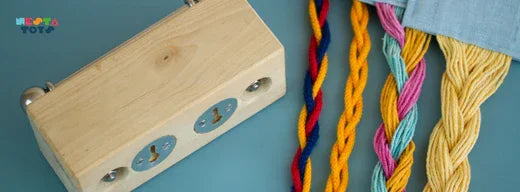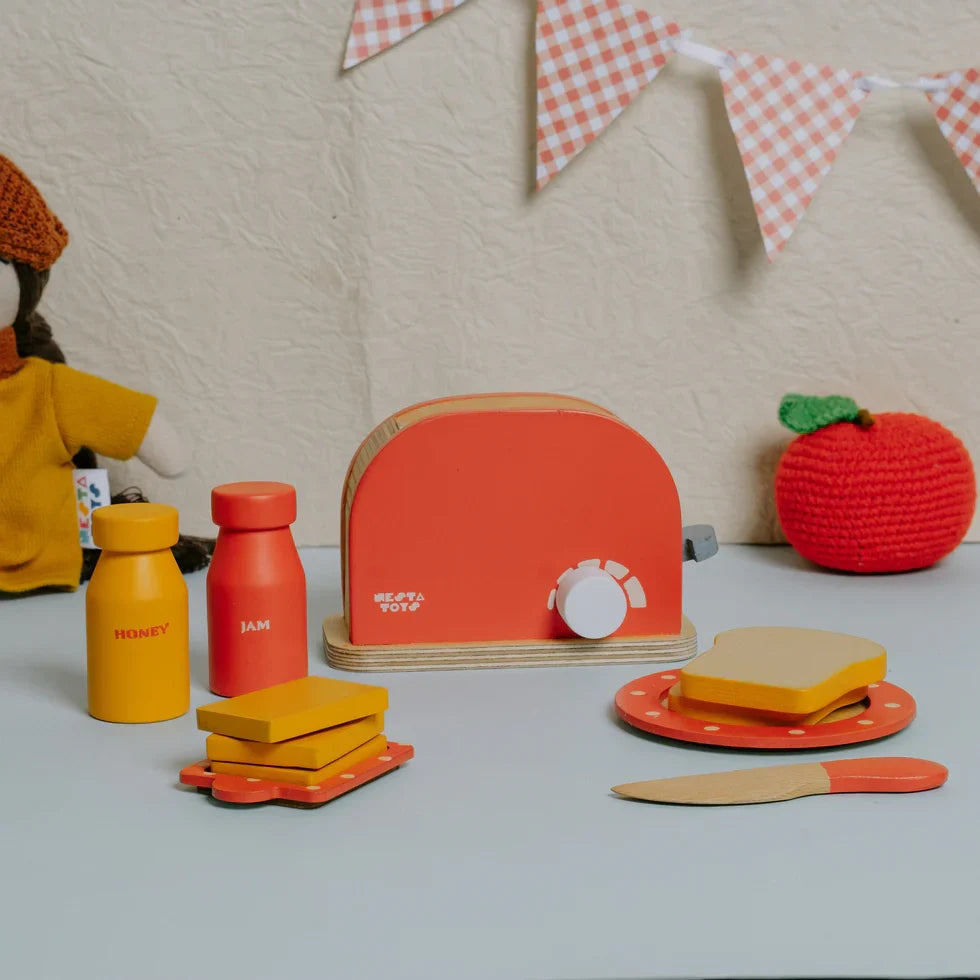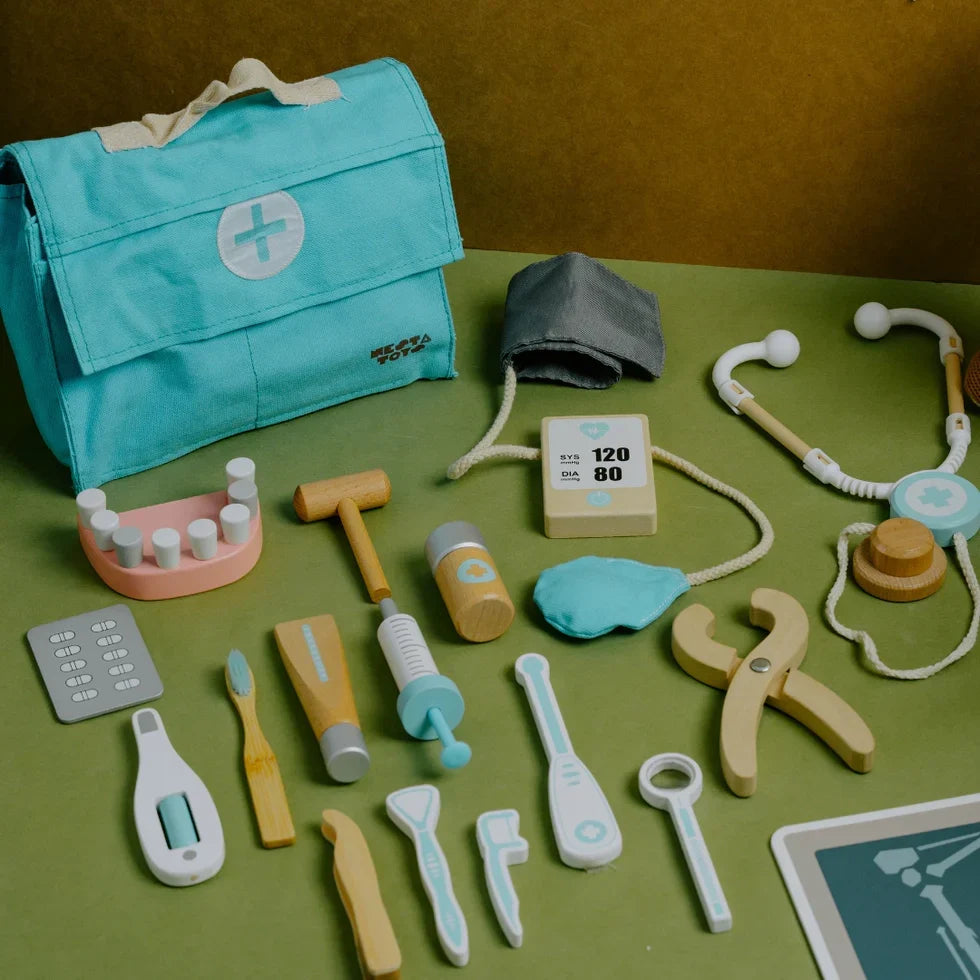Early Learning
Montessori Spindle Box Activity for Kids: Enhancing Numeracy and Counting Skills
Discover the Montessori spindle box activity for children aged 3-6. This hands-on learning experience helps kids understand numeration, counting, and the concept of zero, while fostering fine motor skills. Learn how to replicate the activity at home with simple materials.
Learn moreStereognostic Sense Activity for Kids: Enhancing Touch and Object Identification Skills
Explore a Montessori-inspired activity designed to enhance a child's stereognostic sense. Using blindfolds and a variety of objects, children refine their ability to identify items based on touch. Discover fun at-home activities like mystery boxes and sensory trays to support this learning process.
Learn moreMultiplication Board Activity for Kids: Learn and Memorize Tables | Montessori Method
Help your child master multiplication tables with this engaging Montessori activity. Using a multiplication board and beads, children will practice counting and memorizing basic tables from 1 to 10. Explore fun at-home activities to reinforce multiplication skills and enhance learning.
Learn moreMontessori Smelling Bottles: A Sensory Exploration for Your Child
Enhance your child's olfactory development with Montessori Smelling Bottles. Discover fun activities to refine their sense of smell, improve concentration, and foster curiosity about different scents in their environment.
Learn moreMontessori Thematic Tablets: Enhancing Your Child's Sensory Development at Home
The Montessori Thematic Tablets activity is designed to help children refine their thermic sense through hands-on exploration. This activity involves six pairs of tablets with different heat-conducting properties such as wood, felt, cork, marble, and iron. These materials allow children to experience and differentiate temperatures in a meaningful and engaging way.
Learn moreStep-by-Step Guide to Teaching Reading and Writing with Sandpaper Letters
Montessori Activity Aim To prepare the child remotely for reading by recognizing the symbols and their sounds. To help the child prepare for writing and reading. To make the child aware of the articulation of sounds using visual, muscular, tactile, and auditory senses. To enable the child to take the movement patterns of letter shapes with their writing fingers. To help the child gain muscular memory and retain the movement pattern by running their fingers on the letters. To support the child in recognizing symbols and associating them with sounds as a precursor to reading. Material Description: Sandpaper letters are cut out of sandpaper and pasted onto plaques of wood. The size of the plaque depends on the size of the letter. Each cut-out letter is pasted on the right side of the plaque, leaving clear space on the left. Vowels are mounted on a blue background. Consonants are mounted on a pink background to distinguish between the two. Sixteen green boards are used to represent double sandpaper letters (phonograms) covering "key" sounds not represented by single letters. Sandpaper Letters Activity Description The child is introduced to sandpaper letters after developing a light touch through work with tactile materials and acoustic exercises that help them recognize sounds. 1. Preparation: Sensitize the child’s fingertips before working with the sandpaper letters. Take the child to the display area where sandpaper letters are arranged. 2. Choosing Letters: Select three letters that are distinct in both sound and shape. 3. Three-Period Lesson: First Period: Introduce one letter at a time. Demonstrate how to feel the letter by tracing its shape. Provide the sound of the letter. Encourage the child to think of words containing the same sound while also offering examples yourself. Draw attention to the direction in which the letter is traced. Second Period: Give commands involving the letters, focusing on tracing and repeating the movement pattern while saying the sound. Examples of commands: "Trace 'a'." "Keep 'i' here." "Trace 'r'." "Show me 'a'." Ensure the letters are brought back in order at the end of the exercise. Third Period: Encourage the child to identify each letter and say its sound independently. Inform the child that they can explore these letters and sounds anytime they wish. 4. Interactive Games for Reinforcement: Offer group activities to enrich the learning experience and reinforce the sound-letter association. Suggested At-Home Activities Sand/Salt/Rice Tray: Ask the child to trace the sounds in a tray of sand, salt, or rice. Encourage using different textures such as clay, paints, blocks, beads, collages, strings, or pompoms to form the sounds. Object Collection Game: Create a card for each sound. Ask the child to walk around and collect objects starting with that sound. Repeat this for other sounds as long as the child remains interested Oral Game with Last Sound: Say a word, and have the child identify the last sound and give another word starting with that sound. For example: Bat → Tap → Peacock → King → Goat. Air and Tactile Tracing: Trace the letter in the air while saying its sound. Trace the letter on the child’s back or palm and have them identify or retrieve the corresponding letter. Conclusion:Sandpaper letters provide a multi-sensory approach to learning that integrates tactile, visual, and auditory inputs. By engaging in guided activities and interactive games, the child develops a strong foundation for reading and writing. This hands-on experience not only fosters understanding but also builds confidence, ensuring the child is well-prepared for future literacy milestones.
Learn moreHow to Teach Math Concepts Using the Montessori Trinomial Cube?
The Trinomial Cube activity provides a multi-sensory and engaging experience for children, blending tactile, visual, and logical learning. It lays the foundation for mathematical concepts such as algebra while refining fine motor skills and spatial reasoning. By extending the learning to at-home activities, children can deepen their understanding, apply creativity, and build a strong base for future academic exploration.
Learn moreHow do I play I spy with my little eye game?
The "I Spy" game is a classic and engaging activity that nurtures children's auditory discrimination, phonemic awareness, and vocabulary skills. It is particularly effective in helping children connect the sounds of spoken language with corresponding objects in their environment. This game progresses in stages, moving from simple sound identification to more complex sound analysis, fostering a deep understanding of language and sound patterns.
Learn moreMontessori Place Value Activity: Hands-On Learning with Stamps and Beads
To provide a hands-on, interactive learning experience that strengthens the child's understanding of the decimal system and place value while building confidence in number reading, writing, and interpretation through Montessori-inspired materials
Learn more












